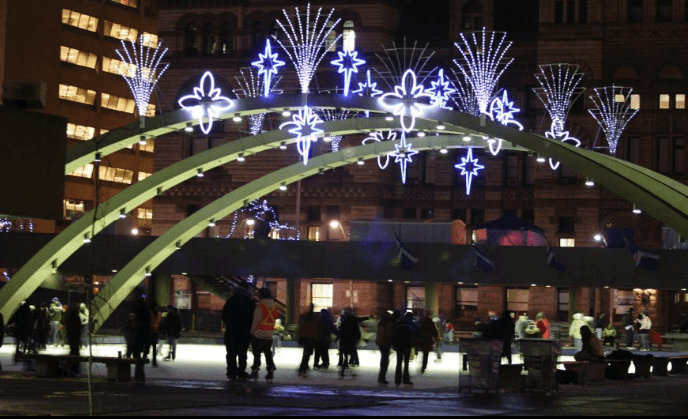When Bank of Canada warned that the pace of house price increase in Toronto and Vancouver cannot be sustained by economic fundamentals, they did not know the world was setting the stage for witnessing one of the greatest economic power shift of this century. Though Bank of Canada had warned not to expect house prices to keep surging at current pace in Toronto and other parts of Canada but during that time they were unaware of Brexit.
Britain’s vote to leave the European Union has created both political and economic confusion, which will result in many scouting for secure investment options and Canada will be among their top of the list. Canada has always been a safe and extremely profitable haven for those investing in real estate. Brexit will encourage scores of foreign buyers to purchase properties in Canada.
According to the Conference Board of Canada, Toronto’s economy is expected to grow by 2.8 per cent making the City one of Canada’s growth leaders again. This will make it the third fastest growing metropolitan economy in Canada this year. Toronto’s real estate is flocked by local, national and foreign buyers each snapping for their share of pie of the booming housing market. The City’s extraordinary growth of real estate market has even baffled seasoned economists who are cautiously amazed with this unprecedented surge.
Although several neighbourhoods in Toronto can be easily classified as best places to live from point of view of amenities, services and of course investment, there are a few of them that have always been favourites of Torontonians as well as others.
The benchmark price* of the single family detached, single family attached, townhouses and condominium apartments is as per Toronto Real Estate Market News and are listed for June 2016 compared with June 2015.
*Benchmark price When the sale price is predicted in a certain area for a general property this is called the benchmark price. The Housing Price Index determines the benchmark price and it is given based on criteria that is commonly found in other properties in the same area. This could be considered a typical sale price and by no means does it take the lower end or higher end properties into account.
Yonge – St. Clair and Annex (Toronto C02)
The intersection of Yonge and St Clair is a mix of high rise office, condo towers with busy street life and lots of shops around. It’s not the trendiest Toronto neighbourhood, but there is something special about this uptown condo haven
Shawn Micallef, The Star’s columnist, compares it to Frank Sinatra in the late 196o’s:
…a little out of touch with the avant-garde, but still wearing a sharp suit and drinking booze out of a proper highball glass. His style remained even as the fashions of the moment moved elsewhere.
Today it is a popular meeting spot for young professionals and it’s often compared to New York’s Upper East Side Manhattan. There is number of restaurants, cafes shops and big company headquarters at each corner of the neighbourhoods. It is perfect for those who love the urban life, because living in Yonge and St. Clair is downtown living at its best and it will only continue to thrive.
Prices:
The Yonge – St. Clair and Annex, comes under zone C02, labelled by MLS. The biggest increase was witnessed by Townhouses with 16.15% followed by detached, semi-detached and condominium properties.
Yonge – Eglinton (Toronto C03)
One of the most bustling intersections in midtown Toronto, the Yonge & Eglinton neighbourhood has been identified by the Province of Ontario as one of five Urban Growth Centres in Toronto. And there’s no wonder why. With its great access to public transit, a thriving business core, and shopping galore, you can see why this neighbourhood remains one of the destinations to visit within the city and a great place to live.
The population of the neighbourhood is a wonderful blend of young families, established urbanites, and 20-something professionals who help lend the area its “Young and Eligible” nickname.
The reputation of the Yonge-Eglinton area as a hub for young families and urban professionals is warranted, given some of the housing figures. Yes, 23 per cent of residents live in homes, while 60 per cent live in apartment buildings that are five stories or taller. This is a mixed-use neighbourhood with some detached homes that are younger than their older downtown counterparts.
Prices:
The Yonge – Eglinton, comes under zone C03, labelled by MLS. The biggest increase was witnessed by detached with 14.57% followed by semi-detached and condominiums.
Lawrence Park North and South CO4
Lawrence Park was a wealthy neighbourhood since its very beginning. In 1900’s, John Lawrence bought the land to start a suburb for the rich. He advertised it as an “aristocratic neighbourhood…far from the lake winds of winter.”
Today Lawrence Park is known as one of the wealthiest city suburbs in Canada. It offers a mix of detached and semi-detached homes and it’s a great area for young families, thanks to the abundance of great public and private schools in the area, including including John Wanless PS, Bedford Park PS, Toronto French School and Havergal.
Lawrence Park South
The neighbourhood’s proximity to Yonge Street and the prestige of Lawrence Park mean this area comes with a fairly hefty price tag, but it hosts beautiful homes with big lots and lots of mature trees. Lawrence Park has a wide-range of architectural styles like English Cottage, Tudor Revival, Georgian, and Colonial designs built between 1910 and 1950.
Prices:
The Lawrence Park North and South, comes under zone C04, labelled by MLS. The biggest increase was witnessed by semi-detached houses with 19.89% followed by detached, townhouses and condominiums.
St. Lawrence Market, Distillery District, Church and Yonge Corridor, Cabbagetown – South -Toronto C08
St. Lawrence Market
Known for its lively and pedestrian-friendly streets, high-rise buildings and the market St. Lawrence is a solid neighbourhood with stable employment rate and plenty of things to do on the weekends.
The St. Lawrence Market was named one of the best markets in the world by Food & Wine Magazine. The neighbourhood’s location adjacent to the financial center and a mix of modern glass and historical red-brick facades present an interesting living space for both adults and young adults who are looking for an affordable condo arrangement.
Exceptional tastes will also be pleased with old warehouse buildings turned into lofts and condos.
Distillery District
Close to the Toronto Harbour, southeast of Parliament Street and Front Street lays 13 acres of historical architecture marked by store-houses and car-free space. Former home to one of the largest distilleries in the British Empire Distillery District breathes the free spirit of weekend nights spent over whiskey – the beverage of which there used be millions of gallons produced in this National Historic Site.
Nowadays, distillery District belongs to young families who prefer condominium living and close distance to the downtown. Settling in the Distillery District also shows an attraction to a particular way of living. Don’t look for the usual shopping mall experience or franchise stores of traditional brands. Expect, on the other hand, local and hand-crafted products, artsy jewelry and upscale stores traditional in similar areas such as SoHo in New York or Covent Garden of London.
Church and Yonge Corridor
Looking at the demographic of this downtown neighbourhood a nickname comes to mind Church and Young Corridor. Inhabited by couples and single families mostly and being home to the Ryerson University Sports and Recreation Centre the Corridor is a palette of diverse backgrounds. New condo buildings rise to the top and most of those units are rentals. It’s also the most popular housing solution for the dominant working age population, 71% per cent, of which 90 per cent live in condominium complexes.
Pedestrian only zones make it a great place for summer entertainment along with green spaces in the neighbourhood such as St. James Park or Ryerson Community Park. Part of the Corridor is Church-Wellesley Village, the part of town where LGBT community associates itself and hosts events of the famous Pride Week.
Cabbagetown South
The patch laminated by Parliament, Sherbourne, Carlton and Shuter Streets in the downtown mosaic is known as Cabbagetown South. Although formerly known as a suburban area on the edge of Toronto downtown the neighbourhood has enjoyed a vibrant and rich history which has remained visible in its specific Victorian architecture and thriving lifestyle composed of local stores, pubs, restaurants and the main street Parliament.
Most of Cabbagetown South inhabitants, 69 per cent, are in the working age of 25-64 and the most popular living arrangements are apartment buildings and in the houses area row housing dominates over semi-detached and single detached. These units are inhabited mostly by couples without children, followed by couples with children and lone-parenting households. Average household income (After-Tax) is $72,207.
Price:
The St. Lawrence Market, Distillery District, Church and Yonge Corridor, Cabbagetown South comes under zone C08, labelled by MLS. The biggest increase was witnessed by semi-detached houses with 13.52% followed by detached , townhouses and condominiums.
Rosedale- Toronto C09
The rough boundaries of the Rosedale neighbourhood are the CPR railway tracks to the north (just below St. Clair Avenue), Bloor Street to the south, Yonge Street to the west, and Bayview Avenue to the east. It’s a central neighbourhood that includes one of the largest crossroads of the city, Yonge and Bloor, and has Mt. Pleasant road running right through it. The great thing about Rosedale is its proximity to everything in the City — halfway to the Danforth or Yorkville, halfway to the Financial District or Yonge and Eglinton, and like all downtown, starting to fill with new voices, young families, and caring neighbours.
The houses in Rosedale are bigger (so too are the prices), so maintenance and repairs can be daunting. Nothing is a small expense. And if you want any free time, a gardener and a friendly carpenter are a must. The big old trees can cause havoc with your drains, and emergency plumbers should be on your speed dial.
PRICE:
Rosedale comes under zone C09, labelled by MLS. The biggest increase was witnessed by condominiums with 14.45 % followed by detached, semi-detached and town houses.
The Beaches E02
The Beaches neighbourhood is bound by Coxwell Avenue to the west, Victoria Park Avenue to the east, Kingston Road to the north, and Queen Street East or Lake Shore Boulevard —as well as Lake Ontario — to the south.
A boardwalk runs most of the length of the southern boundary along the four beaches that make up the shoreline. This makes part of the Martin Goodman Trail that runs west-to-east through the city. Four separate beaches make up the shoreline: Balmy Beach, Scarboro Beach, Kew Beach, and Woodbine Beach, with Woodbine and Kew beaches “Blue Flag” certified for cleanliness and good for swimming.
Most of the homes on the side streets branching from Queen Street East are semi-detached homes, with some larger Victorian and Edwardian homes that have been either taken by a sole owner or divided into apartments. You can also find some low-rise apartments and a few row-houses. Some streets have heritage designations in order to help protect the cottage-like appearance of some homes closer to the lakeshore.
Over 20,000 residents call The Beach their home, with an average income of between $67,000 and $70,000, a value well above the average for the rest of Toronto. The area is notorious for being a wonderful place to raise a family, since there are many parks and schools and very little crime.
PRICE:
The Beaches comes under zone E02, labelled by MLS. The biggest increase was witnessed by town houses with 11.94 % followed by semi-detached, detached and condominiums.
Parkdale- Toronto W01
Found west of the Queen West neighbourhood, Parkdale is bound to the east by Dufferin Street and to the west by Roncesvalles Avenue. The neighbourhood stretches as far north as the CP rail line where it crosses Queen Street West and Dundas Street West, and the area extends as far south as lakeshore.
You would be incorrect in assuming that Parkdale is living up to its reputation as a still down-and-out neighbourhood hovel for hipsters. Parkdale is gradually moving forward, carrying the torch of rejuvenation of Queen Street West beyond the break at Dufferin Street. Filled with many long-standing restaurants and bars, the neighbourhood is becoming more gentrified, with more music venues and upscale restaurants newly developing or taking over freshly renovated old buildings. The fabric of the neighbourhood is rich with Tibetan, North African, and West Indian influences, and all these notes integrate seamlessly to create a neighbourhood on the rise.
From its opulent origins, Parkdale contains many large Victorian homes on larger lots. Many are still intact, while others have been sub-divided into apartments. You can find the bulk of the larger homes on Cowan Avenue, Dunn Avenue, and Melbourne Place.
A few high-rise apartment buildings stand along Jameson Avenue, but new development has taken to condominiums and loft spaces.
PRICE:
The Parkdale comes under zone W01, labelled by MLS. The biggest increase was witnessed by semi-detached with 14.08 % followed by detached, condominiums and Townhouses.
Why and Where To Invest?
Good investment prospects, depends on various factors – foremost is good public and private schools, which tops the priority list of majority of buyers looking for houses. This is followed by transportation, i.e. how close are you from subway or how regular are buses and street cars in your neighbourhood if you do not like to buy a car. Last but not the least people look for shopping amenities closer to their area too.
There are other reasons too why public transport friendly neighbourhoods as well as those closer to every day necessities are more in demand and are seeing people investing in them.
As per Canada Mortgage and Housing Corporation if you drive about 18,000 km per year, it costs on average over $9,000 annually to own and operate a car in Canada. Imagine how much you can save if you are living in a more pedestrian/public transit-oriented development
A research from The Heart and Stroke Foundation of Canada has revealed that when homes are within walking distance of stores and other services, people are 2.4 times more likely to meet the 30-minute minimum than those in homes that are not within a convenient or pleasant walk to stores/services . The organisation recommends at least 30 minutes of exercise every day, which can be mix of walking or biking, to reduce the risk of obesity, heart disease and stroke.
Neighbourhood I mention above checkmark all the priority list of buyers. Besides foreign investors, new immigrants and first time home buyers are ruling the market. Then there are those who have returned to Toronto from Alberta and New Foundland because oil sector is not doing well.
Many overseas buyers purchase the property because their children are studying in Toronto. Unlike other countries, Canada offers students three years of working visa that is also encouraging their parents who can afford to purchase properties rather than renting. They are looking at this is a good investment opportunity in both short and long term.
In the end whether you buy home once in your life time or are a serial purchaser you are always looking for decent to extraordinary returns, which could be monetary, non-monetary or just accomplishing a personal dream. A prospective buyer or investor has to investigate on their own to find more about the neighbourhood. In addition to schools, public transport and proximity to amenities, one should also look for how safe is the neighbourhood. A visit to the nearest police station will give all information you need to know. Purchasing home is always in our bucket list and is an emotional process but with a little hard work and research, we can reap the benefits as well as rewards of this smart investment for many years to come.



